Feedback in Martial Arts coaching

There are many areas in martial arts where some subtlety in feedback, a minor detail, provides the answer to a seemingly much bigger problem. It could be a slight shift in weight that allows you to launch your much larger opponent through the air, or a minor change in your angle on impact that takes your punching power to its potential — yet few instructors would imagine that a minor change in the way they talk to students could make a gobsmacking difference to their performance.
Feedback
Feedback is the driving vehicle of coaching in martial arts and combat sports. How coaches use this vehicle has the potential to influence motor performance, learning and motivation of trainees. In this final instalment of this series, we will introduce two important concepts pertaining to coaching in martial arts: the first is ‘controlling’ feedback, and the second is what’s called ‘autonomous-supportive’ feedback. Controlling feedback refers to cues and instructions in which the coach tells the athlete what to do, and the athlete is expected to do regardless of their own preferences or opinions. In other words, this type of feedback deprives the athlete of a sense of choice and control; for example, “You must kick with your left leg every time your opponent punches” and “You have to move around the ring more”.
By contrast, autonomous-supportive feedback refers to cues and instructions that provide the athlete with a sense of choice and control, even if it’s only minor — for example, “You may want to consider kicking with your left when your opponent punches” and “Do you think moving around more will be beneficial?”
There is evidence suggesting that autonomous-supportive feedback is superior to controlling feedback and should be favoured accordingly. Let’s look at the reasons why…
Supporting vs Controlling
Recent research demonstrates the effectiveness of autonomous-supportive feedback in comparison to controlling feedback. Studies in this area typically involve two groups — a ‘choice’ group and a ‘no-choice’ group — performing a similar motor task. Participants in the choice group have control over one variable in the practice environment, whereas members of the no-choice group don’t. Other than that, both groups go through exactly the same routine. In one such experiment, novice taekwondo students who were allowed to choose the timing of the feedback improved their patterns performance compared to the no-choice group. In other studies, the choice group was allowed to select the number of practice trials of the motor task. For instance, basketball shooting accuracy was improved when participants were allowed to select the number of shots delivered in a training session as compared to a no-choice group that was stopped after delivering a comparable number of shots.
Other investigations involved the order of the exercises. For example, allowing one group to choose the order of three balance exercises to be completed led to a considerable improvement in balance performance compared with the no-choice group. Interestingly, the significance of the choices themselves has no bearing on their beneficial effects.
This concept has also been tested in the field of combat sports. Recently, we wondered if choice effects persist among high-level combat sports athletes, so we decided to put this question to the test with one of my top athletes, a current ISKA kickboxing world champion. During six testing days, we asked the athlete to complete two rounds of 12 single, maximal-effort punches on a ‘punching integrator’ that measures force and velocity. In the choice round the punches were delivered in an order selected by the athlete, whereas in the no-choice round the order was predetermined. Surprisingly, we found that on all days the athlete punched harder and/or faster in the choice rounds by six-to-10 per cent. While these results are of limited significance due to the small sample size, it suggests that the choice effect also influences elite athletes.
The Psychology at Work
Allowing individuals to exercise control over their environment satisfies a basic human psychological need for autonomy. The need for autonomy is so strong that, according to one psychological theory, it is considered as one of the three most important human needs. In regards to motor performance, it seems as though the perception of choice increases the sense of autonomy and confidence, which in turn enhances motor performance. One recent study illustrates this hypothesis quite nicely: Participants in the choice group chose the order of five calisthenics exercises they were required to perform, while in the no-choice group they were told to complete the exercises in a specific order. The two groups were then asked to decide on the number of repetitions to be completed in each of the five exercises. Despite similar fitness baselines, participants in the choice group completed, overall, 60 per cent more repetitions! This finding suggests that the exercise of choice motivated participants to work harder — a dream come true for most coaches. Indeed, some neuroscientists even reported that the sheer anticipation of choice is associated with greater activity in the brain regions involved in motivational processes.
What Now, Coach?
We recently recorded, transcribed and analysed the verbal feedback provided by boxing coaches between rounds of competition in the 2015 Australian National Amateur Boxing Championship. We found that coaches relied heavily on controlling feedback, with only four per cent of the feedback being classified as autonomous-supportive nature. This finding highlights a possible inconsistency between the real-world practices of coaches in competitions and the optimal form of feedback based on current research findings. However, it is also possible that the one-minute interval between rounds might make it difficult to implement autonomous-supportive feedback.
Interestingly, a slightly different picture emerged when we separately examined the frequency of feedback provided by coaches in winning and losing bouts. Coaches in losing bouts tended to implement more controlling feedback compared to coaches in winning bouts — of course leading us to speculate that controlling feedback reduces the athlete’s inclination to attempt potentially successful alternative tactics during the bouts. Furthermore, controlling feedback might undermine confidence and thus be counterproductive to optimal performance. (We should, however, stress that this particular study shows correlation only and does not allow us to identify direct cause-and-effect relationships between the feedback and the results.)
Overall, there is sufficient evidence to suggest that feedback that allows athletes to make choices, even minor ones, can go a long way in enhancing performance, learning processes and motivation. And yet, despite the advantages of autonomous-supportive feedback, our shared real-life experiences as well as the research we conducted led us to believe that coaches rely too heavily on controlling feedback. Accordingly, we recommend that martial arts teachers and combat sport coaches favour autonomous-supportive feedback to a greater extent — which means, allow your students to make decisions in training and, when possible, in competitions. This simple coaching strategy keeps the athletes involved and passes some of the responsibilities to them. It enhances their motivation and confidence, and this leads to better performance. The choice is yours.
From the article ‘The Science of Combat’ Written by Israel Halperin & Gabriele Wulf
Martial Arts coaching seminars and Fitness Training courses are regularly conducted at the ITF Centre of Excellence, in Melbourne, Australia.
For details contact the ITF COE
